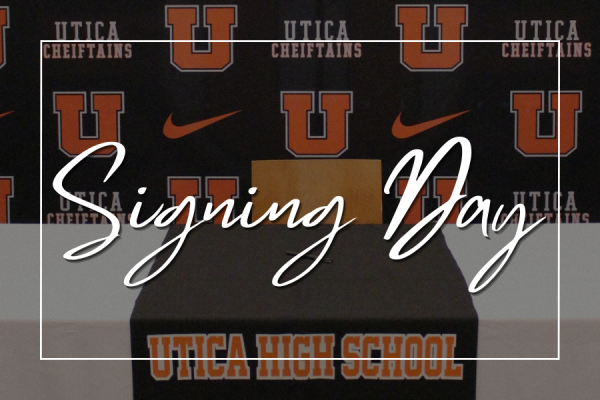March Madness: How to make a successful bracket

NCAA’s “March Madness” is one of the most well-known sporting events in America. Every year, 68 teams enter, but only one team leaves the big dance as champions. While the teams get suited to do battle on the court, many fans battle
in the form of brackets. Making brackets is something most college basketball fans love to do. It takes their love of the game and lets them predict what they believe the outcome will be. It can be funny how much history tends to repeat itself in the “Big Dance.” Every so often, a Cinderella team like Florida Gulf Coast will come around and destroy even the best looking brackets. Understanding the true history behind the “Big Dance” may not give someone the upper hand in this season’s bracket, but it’s still good to know where this great tradition originated.
“I go by the talent of the team, not the seed, I don’t think that seed determines who wins,” sophomore Anthony Kesto said. “I see Michigan’s talent being factor this year; however, a bad night can knock anyone out.”
Anyone who understands the seeding or rank behind the bracket will have an advantage over those who don’t. The seeding, when put into basic terms, is the rank a team gets when entering the tournament. The rank is based on RPI (Ratings Percentage Index), which takes into account things like strength of schedule, conference record, win-loss record and record versus teams
in the top 25.
“I usually pick a number two or three seed to go to the finals because the first seed usually chokes,” senior Kevin
Roseni said. “I normally make two different brackets; one by coin flip and the other by the actual skill of the team.”
After the first round, the real bracket gets started and goes by quickly. There are 64 games played over a span of four days from March 20 to March 23. In the second round, the bracket is set up so the top-seeded teams go up against the lower-seeded teams. The number one seed in one of the four regions will take on one of the sixteen seeds, followed by the number two seed versus the number fifteen, and so on, until every game in the second round is played through. Then a round of 32 will get cut down to “The Sweet Sixteen,” which is cut down to the “Elite Eight,” and then the “Final Four,” until eventually the championship game is decided by the final two teams standing. Some strategy can either make or break a bracket. There will always be upsets, and there will always be teams that get hot and teams that get cold.
“I take the two and three seeded teams to the final,” senior Jacob Phillips said. “The number five seed usually ends in an upset by the
thirteenth seed, in my experience.”
With that in mind, teams that win their conference tournament championship get an automatic bid into the tournament, as well as some much needed momentum. Conference champions have a solid track record for winning the championship over at-large teams. In the last 14 years, only four teams have won the championship that didn’t win their conference championship. Those teams are Maryland in 2002, Syracuse in 2003 and North Carolina in both 2005 and 2009, according to Bleacher Reports’ Jeff Pancek.
“I go by who’s on a hot streak going into the tournament and pick some upsets,” senior Keith Henry said. “I never put number one seeds in.”
Upsets happen, so if a team you choose to go all the way gets eliminated, don’t freak out. This is why a second bracket is almost always
necessary. For example, in last year’s tournament, the South region had one of the more memorable and historic upsets when the fifteen seed Florida Gulf Coast Eagles upset the number two seed Georgetown Hoyas. This was a huge bracket buster for most people, especially when Florida Gulf Coast made it to the “Sweet Sixteen” by beating the number seven seed Aztecs from San Diego
State. Another thing to watch for is a player who starts to catch fire and really put the team on his back; for example, Trey Burke from Michigan, Kemba Walker from Connecticut, and Anthony Davis fromKentucky. Players like this come around every year and
are pivotal in their team’s success. Lastly, a good thing to look for in a solid bracket is when it comes to the championship game stick
with the major conferences. The ACC, the Big East, Pac-12, SEC, Big Ten, and Big 12 have combined for 58 of the 67 national title winners and worth nothing that a mid-major conference hasn’t won a title since 1990 when the UNLV Rebels won.
Looking back at things that can help a bracket are the odds, that’s all the tournament is unless someone were to dig deep and really study film and do stuff above and beyond. Honestly, anyone who wants to make a halfway decent bracket can just look at the RPI that team had against another or if one team has a player playing lights out. These factors can be “calculated” odds for the bracket maker, if a bracket maker plays the odds it’s certainly not any sort of guarantee that’s why they call them upsets but when it comes to the tournament hopefully the odds are in the favor of the person making the bracket. All of these tips and insights may be useful to some, but maybe not for others. The point of this is to take what you need to help your brackets. Remember, making brackets can be competitive, but it should be fun and rewarding; it’s meant to be enjoyed.
Your donation will support the student journalists of Utica High School. The Arrow appreciates your help to keep us up and running.







